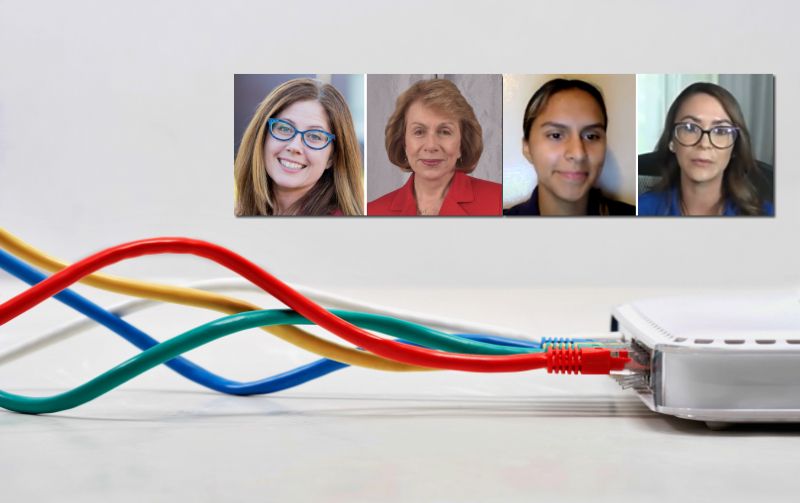Internet Access – A Human Right
(L-r): Angela Siefer, Executive Director, National Digital Inclusion Alliance; Sunne Wright McPeak, President and CEO, California Emerging Technology Fund; Michelle Flores, Tutor, Southeast Community Development Corporation; Érica Del Torro, Parent University Program, Cal State University Fresno (Photo: Ethnic Media Services)
TL; DR
The internet has been a monumental invention that has changed daily living for the better. United Nations has classified the internet as a human right. However, America seems to be intertwined between a political and capitalist battle that dimwits the accessibility of an internet connection for all. Experts give us the real picture of the digital divide and a possible framework to bridge the divide.
We have gone from digging information about a certain topic in a brick-like encyclopedia to having information at our fingertips just by asking our connected smartphones. As technology evolves, we see data transfer speeds getting faster and more reliable – think Fiber internet with Wi-Fi 6 routers capable of speeds north of 2 Gbps at a residential unit. A decade ago, this would’ve seemed outlandish and near impossible. Seems like Moore’s law is in play.
When internet and broadband speeds are exponentially zooming and broadband technology is becoming more accessible and reasonable, it is hard to picture people without a proper internet connection at this point.
The Digital Divide
Living in Silicon Valley, we have a thwarted sense of internet access being widely available and affordable for many. However, when the lens is zoomed out, the digital divide is very clear.
According to Sunne McPeak, President and CEO of California Emerging Technology Fund, “…about 91% of Californians connected at home… But we also have, within that, 6% who are connected by a smartphone only, which is truly an under-connected household.” This equates to fifteen percent of California residents having insufficient internet access.
Zoom out to the national level and there are some more startling revelations. According to Angela Siefer, Executive Director of the National Digital Inclusion Alliance, “36 million U.S. households do not have an Internet connection – a wired line – cable, DSL or fiber in their homes.” Discounting the capability of a mobile connection citing data caps, Siefer also emphasized that the problem is not just a rural problem. “Twenty-six million are urban, 10 million are rural. All of these households are important, but the bigger number piece of this is urban.”
Why is this a Problem?
Not having an internet connection is an unimaginable concept for people in the Valley. Go one day without network, and we would go berserk over not getting our daily social media hit. In all seriousness, under-connected households could potentially lose out on access to education, career opportunities, healthcare, and communication with others. The impact of being under-connected was exacerbated last year.
According to Michelle Flores, a college student and tutor under the Southeast Community Development Corporation, students suffered because they couldn’t attend classes and grades went down. Many low-income students would rely on public networks, hotspot connections, a shared computer with a spotty internet connection.
Erica Del Torro, part of the Parent University program at CSU Fresno, further added that parents and students had a hard time managing their devices and figuring out internet-based platforms because of the lack of exposure or an unreliable connection dampening their ability to learn.
The Solution
All the experts in the media briefing pointed out that the infrastructure for broadband access must improve – more reliable connections, faster speeds, higher capabilities. The second part of the equation comes down to holding ISPs and the government accountable. One of the most prominent reasons for not having proper internet access was affordability. ISPs and lobbyists have been able to influence the government to work in their favor and the citizens end up paying for it.
Siefer points out that, “In the United States, providing Internet service is a commodity, it’s not a public utility… Legally, it’s not a utility. But morally, it should be.” Siefer lays out that legislatures have to redefine shareholders of internet connections as citizens and the community, not ISPs. McPeak agrees: “It is first and foremost the responsibility of our government to provide the leadership… We say ‘either step up or step aside!’”


